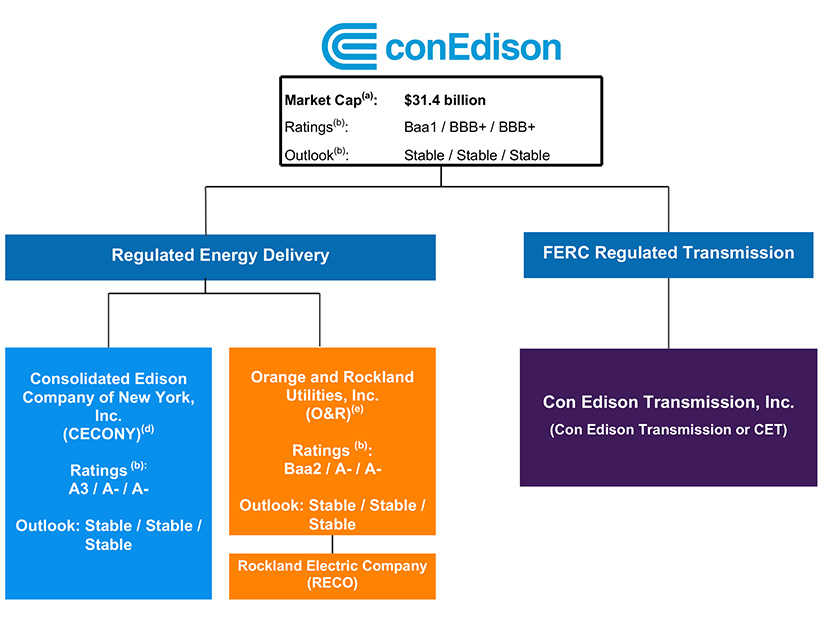FERC on Feb. 16 approved Vistra Energy’s deal to buy Energy Harbor, which it wants largely for its four nuclear plants and retail business, for $3 billion plus paying off $430 million of debt (EC23-74). The commission required divestment of two of Vistra’s fossil plants in PJM.
Vistra plans to launch a new subsidiary combining its clean energy generation and retail business called “Vistra Vision” of which 15% will be owned by Energy Harbor shareholders, while spinning off its natural gas and coal units into a separate subsidiary called “Vistra Tradition.”
Energy Harbor is the competitive generation and retail business spun off from FirstEnergy several years ago. It owns three nuclear plants: Beaver Valley Power Station at 1,969 MW, the Davis-Besse Plant at 962 MW and the Perry Nuclear Power Plant at 1,302 MW.
Energy Harbor also owns some fossil plants, and Vistra already owns generation in PJM. The merging firms argued their impact on competition should be measured against the whole RTO, while PJM’s Independent Market Monitor, the U.S. Department of Justice’s Antitrust Division and the Ohio Consumers Counsel all argued FERC needed to consider smaller submarkets.
Both Energy Harbor and Vistra own generation in the American Transmission System Inc. (ATSI) zone, so Vistra agreed to sell off its 369-MW Richland natural gas peaking plant and its 16-MW Stryker oil plant to end concerns over an excess of power in that submarket of PJM.
The sale of those plants “obviates the need” for FERC to determine any submarkets relevant to the transaction so it focused on its impact on PJM as a whole, the order said.
“After the proposed transaction closes and after completing the divestiture of Richland-Stryker, the Davis-Besse and Perry generating units, currently owned by Energy Harbor, will comprise the only units owned by Vistra in the ATSI transmission zone,” FERC said. “Furthermore, as discussed below, Vistra must sell Richland-Stryker to a buyer that will not fail the horizontal competitive analysis screens, including the delivered price test, for the PJM market or any relevant submarket, post-transaction.”
FERC was not convinced the deal would impact any other submarkets, saying they failed to show any consistent price separation caused by transmission constraints that would indicate a submarket under commission precedent. The commission found the deal would not impact the whole of PJM either, and declined to adopt behavioral requirements suggested by the Monitor.
“The PJM IMM relies on perceived existing limitations in PJM’s market power mitigation as the basis for proposing additional behavioral mitigation,” the order said. “These arguments are directed at the effectiveness of the PJM markets and mitigation measures as a general matter.”
FERC declined to deal with such general issues in this merger case, saying it is not the appropriate venue for that.
The IMM also used a different analysis than what FERC employs in merger reviews to argue the combined firm would have market power in PJM, especially in local markets. DOJ’s Antitrust Division also wanted FERC to use a “supply curve” analysis to review the deal.
“The commission’s regulations do not require a supply curve analysis, and applicants have provided a horizontal market power analysis, including three delivered price tests, consistent with our requirements,” FERC said. “Moreover, the divestiture commitment appears to alleviate DOJ Antitrust Division’s specific concern about the proposed transaction given that the divestiture of Richland-Stryker eliminates Vistra’s ‘ability’ to engage in strategic withholding using that facility.”
The OCC and the Northeast Ohio Energy Council argued FERC should examine the deal’s impact on Ohio’s retail energy market as it will combine two of its largest firms. While FERC lacks explicit authority over the retail power market, the Ohio PUC is unable to review the merger and its impacts on the market, the two said.
The federal regulator’s policy is to review the impact on retail competition whenever a state regulator asks it to. Because the PUC made no such request, FERC declined to examine the deal’s retail market impacts.
The Ohio Energy Advocate, which was set up to represent the interest of the state’s energy consumers at FERC and before other federal regulators, did file a request to review the impact on retail markets, but the commission said it does not count as a state regulator.
